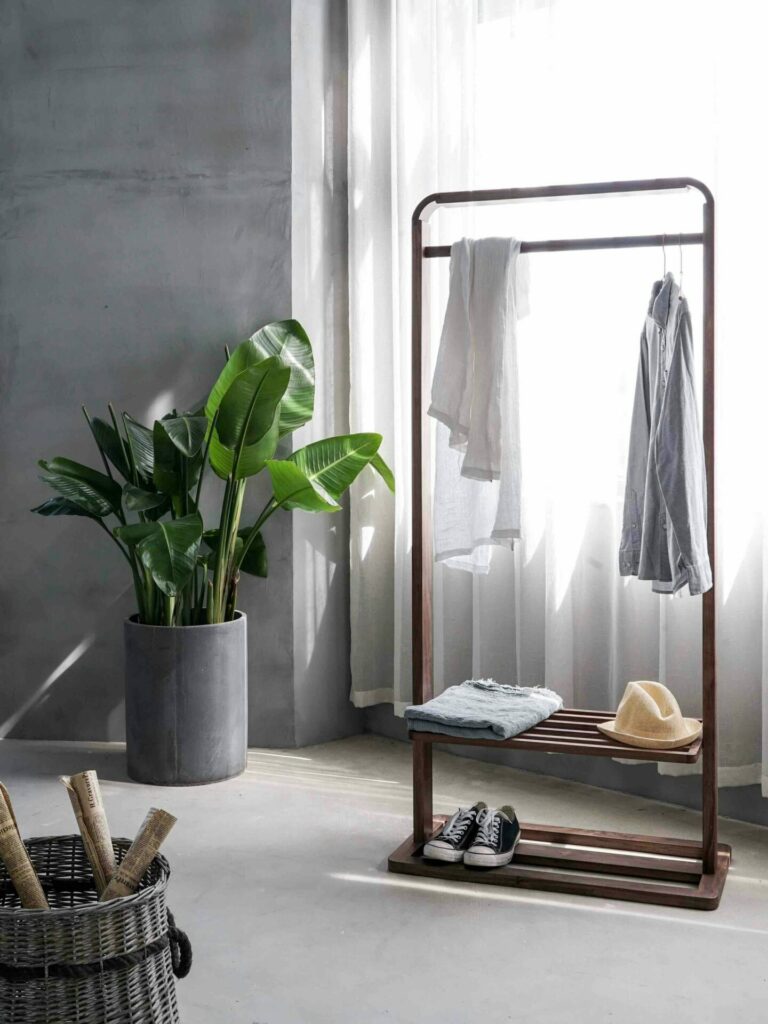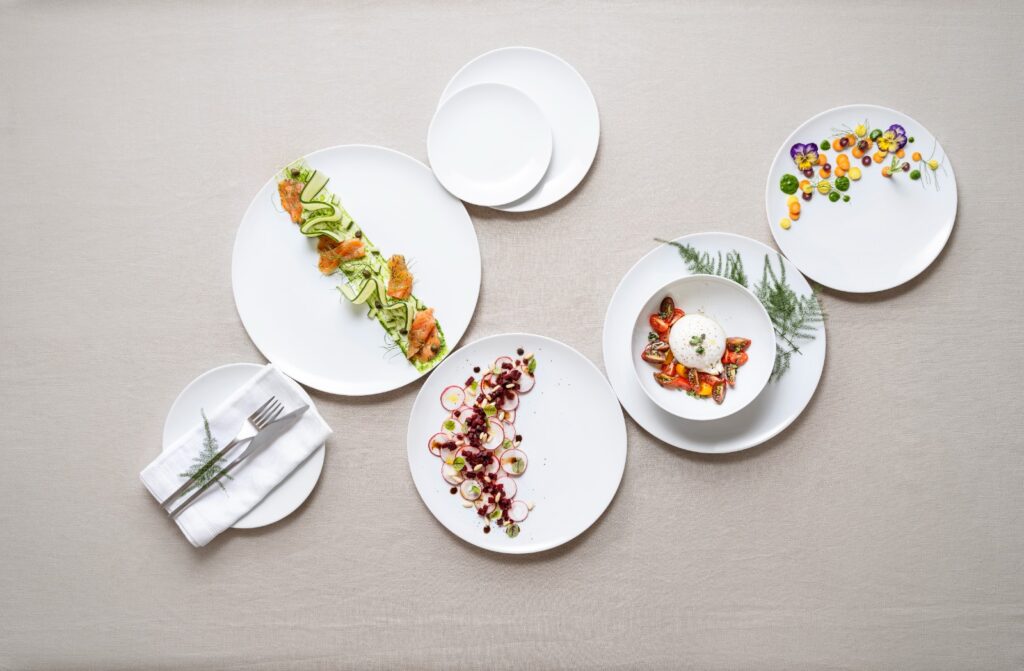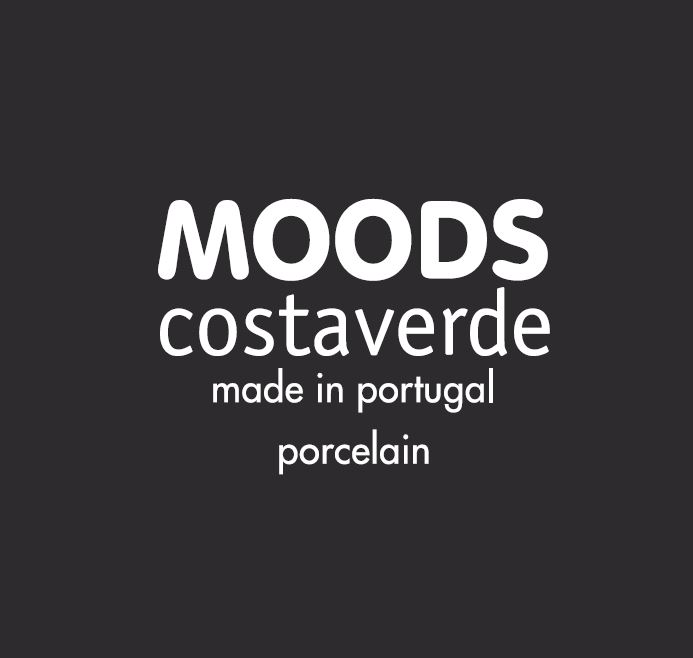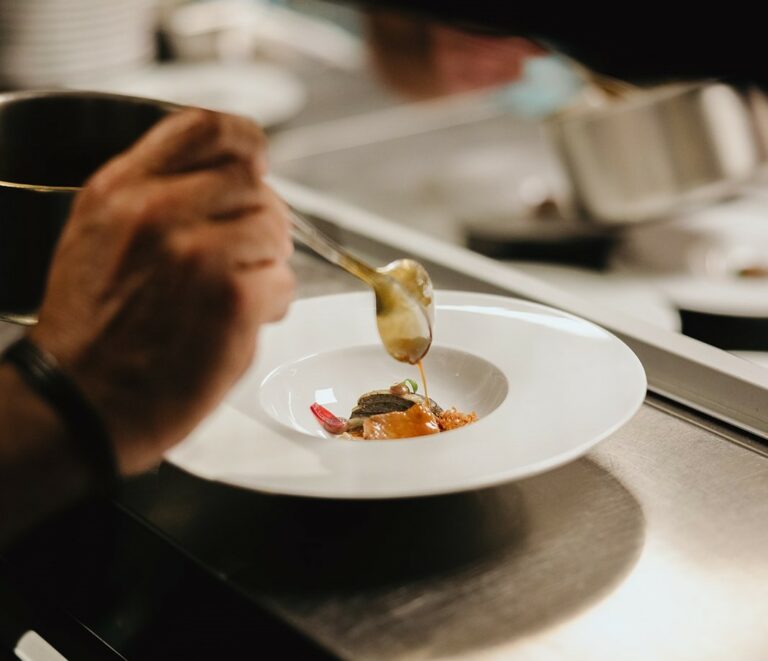
Menu

Exploring the multisensory experience across food by Food Design Lab Lisbon.
“Without Design, eating would be much more difficult and monotonous.” (Chapel, 2013)
The act of eating, nowadays, navigates into two directions: the convenience and speed of what we eat – unhealthy at times – that allows us to stay nourished, or not, and the experience that can be seized by all senses, while evoking memories, feelings and emotions in the consumer. We start from the idea that food is necessary for our survival, but its cultural dimension is highlighted by its social action.
Food Design, from all the definitions we can find, is concerned with the breadth of the food system, whether it’s a dish developed with advanced culinary techniques and presented by a chef, or a food of industrial production that reaches the consumer via packaging, through a long production and distribution chain.
This is where the importance of the senses is reflected in the holistic dimension of what Food Design is. We cannot create products, services and experiences without thinking and working with the sensory dimension so that the consumer can fully enjoy the experience, or at least that is how it should be.
Most of what we absorb through our senses cannot be expressed in words. The aphorism “the first taste comes always with the eyes“, attributed to Apicius (in the first century), is perhaps the best expression into describing the sense of sight when it comes to food. The way we appreciate food is extremely sensorial, for the information our senses provide us with is integrated in a perceptual and semantic way, in order to providing us with an overall experience. What people see holds a substantial importance across food items’ perception, although the sense of sight is not a property of food, itself, it is, otherwise, part of the multisensory sensation of taste, produced by food item itself. Visual characteristics (i.e., colour, shape, texture, brightness) hold a major influence across the perception of taste and its acceptance. The visual component not only affects the perception of food but also plays an important role in expectation, while the first contact with food is normally made through sight, this last one contributes significantly towards its acceptance. Sight is, in this case, the sense responsible for approving the food, while colour is the characteristic mostly contributing towards creating expectations.
On the other hand, hearing, often neglected in food, is extremely important. Exploring interaction between sounds and music, with food, is not only restricted to scientific studies. Chefs, designers and artists have, over time, developed multisensory experiments that have been tested in the real world. The sound of food items and its preparation are important, because they help creating expectations. What we hear really influences how we taste food items. The sound of food items, as they are being bitten, gives us information that would have been important to our ancestors, such as the freshness of vegetables or the ripeness of fruit. Chef Paul Bocuse used to say that the ideal wine satisfies all senses: sight through colour, smell through aroma, touch through freshness, taste through flavour, and sound through its glou-glou (swallowing sound). Sound in food helps us raising expectations, and what we hear really influences how we taste food items. We learn to like certain sensory cues because of the meaning they comprise to our brain during eating, for we can also see which physiological reward comes from them. What we hear and, to a large extent, what we like to hear, influences the remaining senses.
On the subject of smell, we quote Brillat-Savarin who said that “mouth was the laboratory and nose the chimney“. Smell is not just a sense, but a double sense which comprises the orthonasal sense of smell (inhaling) and the retronasal sense of smell (exhaling), thus having a double role. The sensation perceived by taste is a combination of taste and the aromas released by the exhalation of air. Gastronomic satisfaction is in part caused by the sense of smell, not only because of the way it works, but also because of the very close relationship it has with the areas of our brain, monitoring emotions and memory. Smell influences unconsciously, thus generating emotions and awakening memories, and is perhaps the most difficult sense to verbalize.
Taste, form all the senses, is probably the one that generates the most confusion as to its definition. The big mistake lies in distinguishing between taste and flavour. Adjectives like fruity, citrusy, smoky or burnt are not tastes but flavours. For example, if you cover your nose and taste some food, you will most likely only get the basic taste that is part of the food – sour, bitter, sweet, salty and umami. The complexity of taste goes beyond this distinction between taste and flavour, by being the interaction that exists in our mouth and our brain, the one establishing what final taste experience of the food will be like.
A food item is not only perceptible through its smell, taste, sound and visual image. We also experience it through touch, considering that 60% of the taste of food actually corresponds to its consistency. When we use cutlery to eat, we can somehow perceive the texture associated with the food, but this experience is increased if it comes into direct contact with our hands. Touch is the most developed sense of all, counting that the skin, the first receptor of this sense, occupies around 16 to 18% of our body. The sense of touch goes beyond the physical and chemical properties of food items, the texture present across the utensils we use to eat, also influences the perception we have of its taste. Texture plays a crucial role in our perception of the quality of food, its acceptability and ultimately our food and drink preferences.
The sense of sight, as mentioned above, holds huge impact on how we eat and the expectations we create when we see a food item in front of us. Visual composition plays an important role in our sensory perception of food items, and although there aren’t many studies that can help professionals in the Culinary Arts, there are some tools that can be used, while showing consumer’s preferences when faced with unusual visual compositions.
Food Design is an area that has been gaining more and more prominence across food sector, in recent years, as it seeks to create gastronomic experiences, involving, not only the sense of taste, but also the other senses. For those who work in the food area, presentation is as important as taste. After all, it is through appearance that we are given the first contact with the food item.
From the choice of ingredients to their platting, Food Design seeks to create a pleasant and inviting sensory experience, arousing consumer’s curiosity and appetite.
Creativity and innovation are at the heart of what Food Design is all about, thus allowing designers, chefs and other professionals, into challenging established conventions, while creating new sensory experiences. Increasing the pleasure of eating, making what we eat a more pleasant experience, generating healthier eating habits, addressing specific health concerns or the sustainability of food systems are just some examples where Sensoriality and Food Design can provide a relevant contribution towards our feeding. Be creative with Costa Verde’s collections.
Ricardo Bonacho
Partner FOOD DESIGN LAB LISBON
Co-Founder F.O.R.K. FOOD DESIGN FOR OPPORTUNITIES, RESEARCH AND KNOWLEDGE





